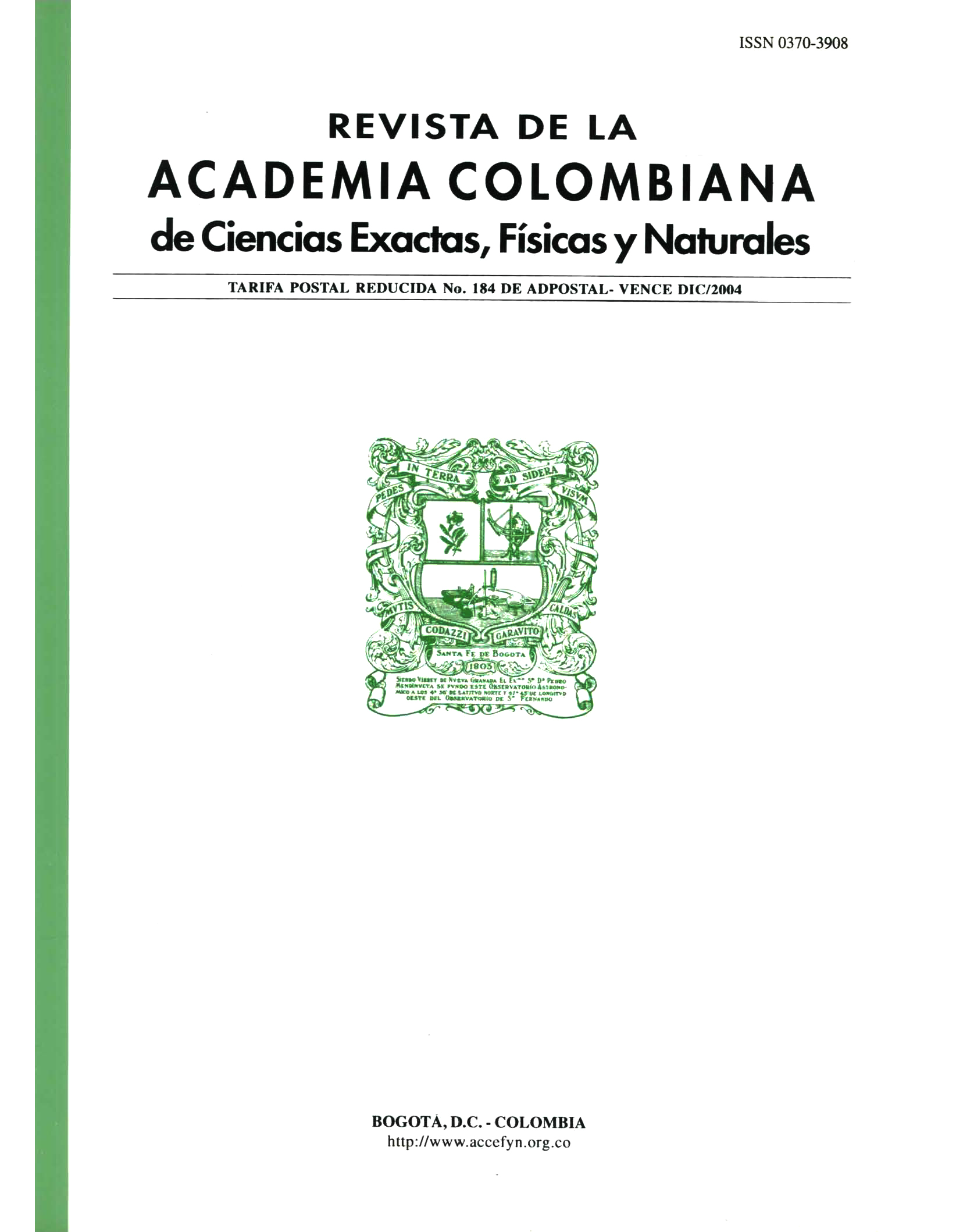Resumen
Los varistores cambian su resistencia con el voltaje. Estos materiales electrocerámicos suministran una protección fiable y económica contra transitorios de voltaje ocasionados por relámpagos, conmutaciones o ruido eléctrico en las líneas de potencia de corriente continua o alterna. Normalmente se utilizan ZnO, SnO2 y TiO2 como compuestos base para la formación de los varistores, adicionándoles otros óxidos para mejorar su comportamiento eléctrico. Acá se indica cómo sintetizar la materia prima para obtener varistores, con base en el ZnO, utilizando el método de coprecipitación. Los polvos cerámicos obtenidos se caracterizaron con difracción de rayos X (DRX), análisis térmico diferencial ATD y espectroscopia infrarroja FTIR; a los materiales sinterizados se les determinaron sus características eléctricas y microestructurales a través de las curvas corriente – voltaje y Microscopía Electrónica de Barrido (MEB), respectivamente.
Referencias
Ávila, H.A. 2004, “Síntesis y caracterización de polvos cerámicos del sistema Zn-Pr-Co obtenidos a través de los métodos co-precipitación y precursor polimérico” Trabajo de grado, Univesidad del Cauca.
Clarke D.R. 1999, “Varistors Ceramics”, J. Am. Ceram. Soc., 82 [3], 485-502.
Cobo J. 2005, estudio de la síntesis de alúmina por el método de precipitación controlada (MPC), Trabajo de Grado, Universidad del Cauca.
Cruz, A.M. 2003, “Obtención de varistores del sistema cinc praseodimio cobalto” Trabajo de grado, Universidad del Cauca.
Guha J.P. , Kunaj S. Suvorov D. 2004, “Phase equilibrium relations inthe binary system. Bi2O3 – ZnO”, J. Mater. Sci. 39 [3], 911- 918.
Gupta T. K. 1990, ”Application of Zinc Oxide Varistors”. J. Am. Ceram. Soc., 73 [7], 1817 – 1840.
Haile S.M. , Johnson D.W. , Wiseman G.H. , Bowen H.K. 1989, “Aqueous precipitation of spherical zinc oxide poweders for varistor applications”, J.Am. Ceram. Soc., 72 [10], 2004 – 2008.
Harnden J.D., F.D. Martzloff, W.G. Morris, F.G. Golden,1972, “Metal-oxide varistor: a new way to suppres transients”, Electronics-Technical articles.
Hower P.L. , Gupta T.K. , 1979, “A barrie model for ZnO varistors”, J. Appl. Phys. 50, 4547-4855.
Jolivet J. 2000, Metal oxide chemistry and synthesis, Jhon Wiley R. Sons, LTD.
Lesssing P,A., 1989, “Mixed-Cation Oxide Powders viapolymeric precursors”, Am. Ceram. Soc. Bull. 68 [5], 1002-1007.
Levinson L.M., Philipp H.R., 1986, “Zinc Oxide Varistors” - A Review, Ceramic Bulletin, 65 [4], 639-646.
Lionel M. Levinson 1988, “Electronic Ceramics: Propierties, Devices, and Applications”, General Electric Company. Schenectady, New York.
Matsuoka M., 1971, “Nonohmic Properties of Zinc Oxide Ceramics”, Jpn. J. Appl. Phys. 10 [6] 736-746.
Richard Einzinger, 1987, “Metal Oxide Varistors” Mater. Sci.,17, 299-32.
Sheng Y., Yan T., Chen L. 2000, Analysis of ZnO prepared by sol-gel method, ceram. Int. 26, 733-737.
Vidal, K.A. 2003, “Determinación de complejos intermedios cinc en el sistema Zn (CH3COO)2-NH4OH-H2O durante la síntesis de ZnO”, Trabajo de grado, Universidad del Cauca.

Esta obra está bajo una licencia internacional Creative Commons Atribución-NoComercial-SinDerivadas 4.0.
Derechos de autor 2023 https://creativecommons.org/licenses/by-nc-nd/4.0

